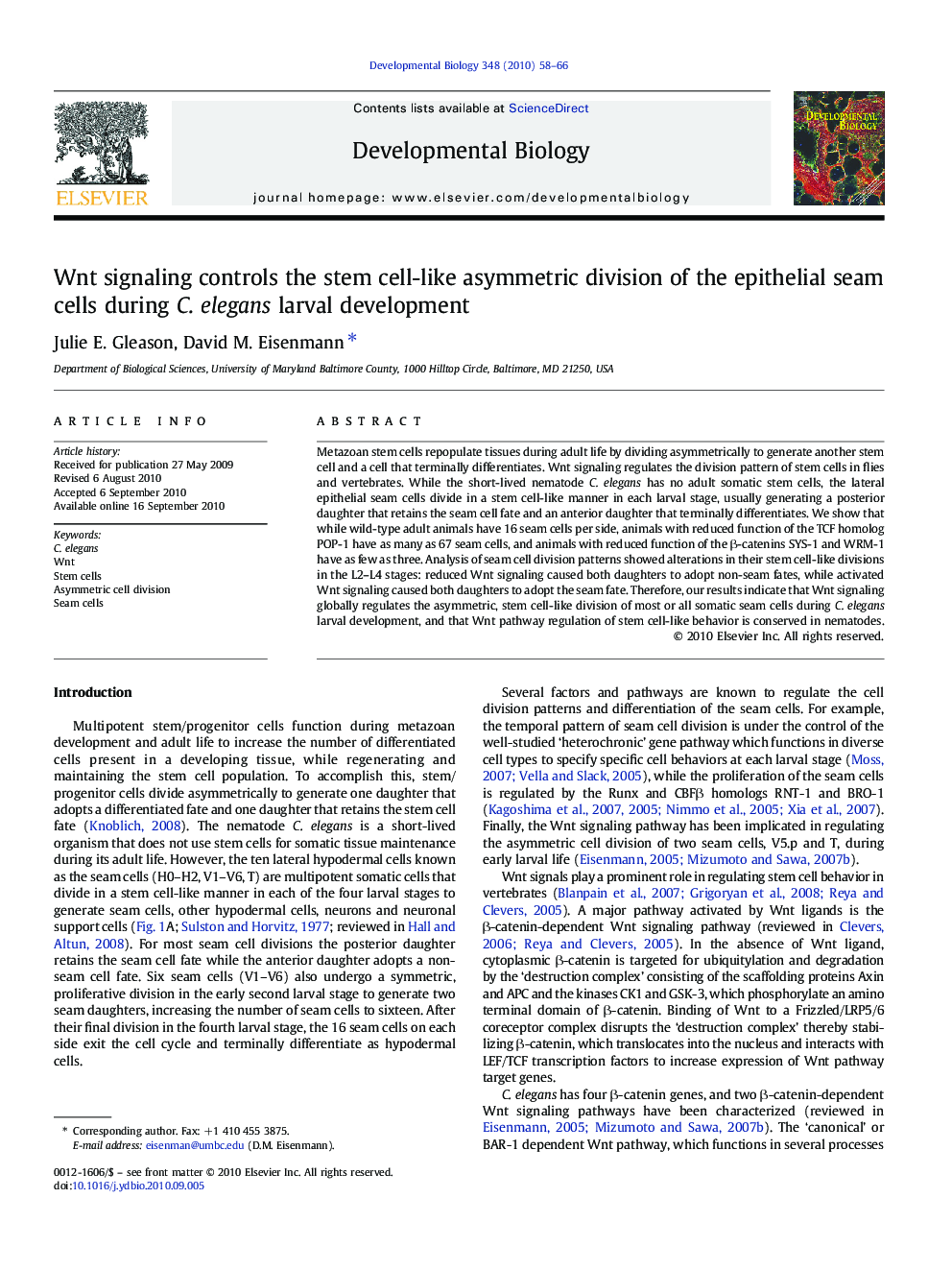| کد مقاله | کد نشریه | سال انتشار | مقاله انگلیسی | نسخه تمام متن |
|---|---|---|---|---|
| 10933016 | 1093759 | 2010 | 9 صفحه PDF | دانلود رایگان |
عنوان انگلیسی مقاله ISI
Wnt signaling controls the stem cell-like asymmetric division of the epithelial seam cells during C. elegans larval development
دانلود مقاله + سفارش ترجمه
دانلود مقاله ISI انگلیسی
رایگان برای ایرانیان
کلمات کلیدی
موضوعات مرتبط
علوم زیستی و بیوفناوری
بیوشیمی، ژنتیک و زیست شناسی مولکولی
بیولوژی سلول
پیش نمایش صفحه اول مقاله

چکیده انگلیسی
Metazoan stem cells repopulate tissues during adult life by dividing asymmetrically to generate another stem cell and a cell that terminally differentiates. Wnt signaling regulates the division pattern of stem cells in flies and vertebrates. While the short-lived nematode C. elegans has no adult somatic stem cells, the lateral epithelial seam cells divide in a stem cell-like manner in each larval stage, usually generating a posterior daughter that retains the seam cell fate and an anterior daughter that terminally differentiates. We show that while wild-type adult animals have 16 seam cells per side, animals with reduced function of the TCF homolog POP-1 have as many as 67 seam cells, and animals with reduced function of the β-catenins SYS-1 and WRM-1 have as few as three. Analysis of seam cell division patterns showed alterations in their stem cell-like divisions in the L2-L4 stages: reduced Wnt signaling caused both daughters to adopt non-seam fates, while activated Wnt signaling caused both daughters to adopt the seam fate. Therefore, our results indicate that Wnt signaling globally regulates the asymmetric, stem cell-like division of most or all somatic seam cells during C. elegans larval development, and that Wnt pathway regulation of stem cell-like behavior is conserved in nematodes.
ناشر
Database: Elsevier - ScienceDirect (ساینس دایرکت)
Journal: Developmental Biology - Volume 348, Issue 1, 1 December 2010, Pages 58-66
Journal: Developmental Biology - Volume 348, Issue 1, 1 December 2010, Pages 58-66
نویسندگان
Julie E. Gleason, David M. Eisenmann,